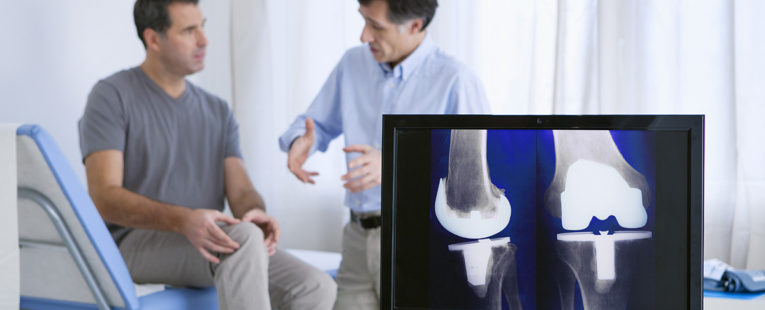Preparing for your joint replacement surgery requires more than just updating your Netflix queue.
Dr. Peter Mulhern, orthopedic surgeon with OSF Medical Group – Orthopedics, offers some things you can do in advance to help you have a smooth joint replacement journey.
1. Check your schedule
Joint replacement is an elective procedure, so depending on your pain level it might be worth delaying the procedure to a time when it’s more convenient for you.
Many patients prefer to replace a joint during the winter, since they’re more active in the summer.
“Think about what’s going on in your life,”said Dr. Mulhern. “You might not want to schedule your joint replacement surgery if you have a nephew’s high school graduation coming up.”
2. Learn everything you can
Talk with your orthopedic surgeon in advance to learn more about the surgery. Many have models or actual prosthetics you can hold in your hand to understand what your new joint is going to look and feel like.
If your office provides an education program, take advantage of it.
“I also tell my patients to go to YouTube and watch an actual joint replacement surgery. It can give them a better understanding of what to expect – if they can stomach it,” Dr. Mulhern said.
3. Goof-proof your house
Set up a central location where you can comfortably spend your time after your surgery. You’ll want to have easy access to the things you’ll need the most – such as a bathroom.
Then remove any potential obstacles around you, such as area rugs that you could trip on when you’re moving around.
4. Plan for pain
There’s no getting around it. Joint replacement surgery comes with pain. But a frank discussion with your surgeon can help prepare you for what to expect and guide you to the best pain management options.
For some patients, it works best to switch to their at-home medicine plan while they’re still in the hospital, says Dr. Mulhern. That way they can adjust to the schedule and lower doses while they still have the hospital staff to support them.
5. Be ready to work
 Meet with your physical therapist in advance to learn exactly what your recovery will entail, because the work you put in after the surgery will make all the difference in your ability to return to normal life.
Meet with your physical therapist in advance to learn exactly what your recovery will entail, because the work you put in after the surgery will make all the difference in your ability to return to normal life.
“A lot of people are surprised when they’re expected to get up and walk the next day,” Dr. Mulhern said. “Be aware of the work ahead. You’re going to have to put the effort in – but also don’t overdo it.”
6. Go clothes shopping
You don’t actually need to buy a whole new wardrobe (unless you want to), but keep in mind what clothing will work for the entire recovery process. Immediately after your surgery, you’ll want clothing that is comfortable and easy to get on or off.
Another thing to keep in mind is what you wear to follow-up appointments, says Dr. Mulhern. Even as you start feeling better and more comfortable, you’ll want to stick with the same easy clothing so the surgeon can inspect the joint.
7. Arrange for help
Even in the best case scenario, it will be at least two to three weeks before you can start driving and about a month before you start feeling close to normal.
From keeping the pantry stocked and cooking meals to getting to and from appointments, you’re going to need a lot of help in the meantime.
“I don’t think people always realize just how dependent they will become,” Dr. Mulhern said. “If you have relatives that live far away, it might be a good time to arrange for them to come stay with you at home.”
If you don’t have friends or family who are able to help, you can look at staying in a rehabilitation center or arrange for home care.
8. Fill your time
And, yes, you probably will want to update your Netflix queue. Or borrow some books from a friend. Or purchase a new book of crossword puzzles.
If you’re used to being active, being saddled to your bed or chair can feel like torture. Make sure you line up easy activities to fill your time and keep you sane while you’re recovering.
Last Updated: November 27, 2020
